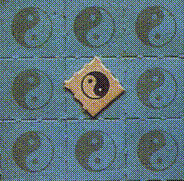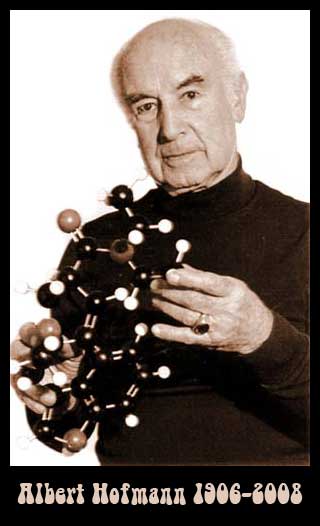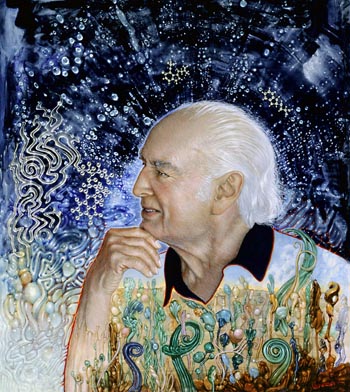Never mind marijuana use in the technology industry, the new business “trip” is to drop a tab of LSD. Andrew Leonard of RollingStone Magazine explains: Let’s call him “Ken.” Ken is 25, has a master’s degree from Stanford and works for a tech startup in San Francisco, doing a little bit of everything: hardware and …
Tag: LSD
Jun 01 2010
“I Thought That Was The Point”
Brain Waving / by John Perry Barlow, AlterNet, May 20, 2010
How LSD Destroyed God’s (and Dad’s) Rigid Authority and Ended the Dull 1950s
One can make a non-ludicrous case that the most important event in the cultural history of America since the 1860s was the introduction of LSD.
The following is adapted from the Foreword to Birth of a Psychedelic Culture: Conversations about Leary, the Harvard Experiments, Millbrook and the Sixties, by Ram Dass and Ralph Metzner with Gary Bravo, from Synergetic Press.
LSD is a drug that produces fear in people who don’t take it. -Timothy Leary
It’s now almost half a century since that day in September 1961 when a mysterious fellow named Michael Hollingshead made an appointment to meet Professor Timothy Leary over lunch at the Harvard Faculty Club. When they met in the foyer, Hollingshead was carrying with him a quart jar of sugar paste into which he had infused a gram of Sandoz LSD. He had smeared this goo all over his own increasingly abstract consciousness and it still contained, by his own reckoning, 4,975 strong (200 mcg) doses of LSD. The mouth of that jar became perhaps the most significant of the fumaroles from which the ’60s blew forth.
Everybody who continues to obsess on the hilariously terrifying cultural epoch known as the ’60s – which is to say, most everybody from “my gege-generation,” the post-War demographic bulge that achieved permanent adolescence during that era – has his or her own sense of when the ’60s really began. There are a lot of candidates: the blossoming pink cloud in the Zapruder film, Mario Savio’s first speech in Sproul Plaza, the passage of the Gulf of Tonkin Resolution, the Beatles’ first appearance on the the Ed Sullivan Show, the first Acid Test, the Human Be-In in Golden Gate Park, the release of the song “Good Vibrations,” the day Jerry Garcia got kicked out of the army. But as often as not, if you are a Boomer, the ’60s began for surreal on the day you dropped acid. And if that is when the shit hit your personal fan, you may owe a debt of ambiguous gratitude to the appealingly demonic young sociopath who conveyed the Stark Bolt of Chemical Revelation to the nice young gentlemen of the Harvard Psilocybin Project.
The essential tameness of the group that was to become so notorious is only one fascinating feature of discourse to follow between the Project’s second and third most celebrated veterans: Ram Dass ( who as Richard Alpert, PhD, was Tom Sawyer to Tim Leary’s Huckleberry Finn) and Dr. Ralph Metzner (who began as an acolyte and wound up presiding over the remains).
Thanks in very large part to the subsequent exertions of Drs. Leary, Alpert and Metzner, the experience was one shared over the following decade by tens of millions of Americans, the larger part of whom found it difficult ever after to take seriously the verities that few in Eisenhower’s America would have questioned. Our paradigm got fucking well shifted. At least mine certainly did. And so, I would venture, did that of the United States of America, during the trip we took between 1961 and 1972.
Nov 03 2009
Trippin Tuesday: Inside LSD (Updated)

from Erowid image vaults
Just wanted to give a heads up that National Geographic’s Explorer series will be premiering, Inside LSD, tonight (Tuesday 11/3) @ 7 PM and 10 PM; also showing on Sat Nov 7 at 4PM and Tues Nov 10 at 3 PM (TV Schedule).
…as the 40th anniversary of Woodstock fades in the rearview mirror, the National Geographic Channel is giving LSD a second chance, as it were. On Tuesday night in its Explorer series, INSIDE LSD talks to scientists and therapists who are examining the narcotic (sic) anew, trying to learn specifically how it works in the brain and whether it might have uses that Jerry Garcia never envisioned. The program, as its narrator, Peter Coyote, says, is an attempt to separate the myth from the molecule.
One segment explores the possibility that some form of LSD could help sufferers of cluster headaches, and its footage of one such sufferer in the throes of an attack leaves you wishing the poor fellow relief no matter where it might come from. In another part of the program, a woman with terminal cancer talks about how an LSD trip helped her break free of the anxiety about death that was consuming her final months.
(note: I put “sic” after narcotic because LSD is not usually classified as such, medically or legally.)
Jul 20 2009
Pique the Geek 20090719. Drugs of Abuse. LSD: The Evangelicals
LSD is essentially unique in that there were a group of people who actively advocated its universal use. There are several reasons for that in my knowledge, and probably others of which I am oblivious.
There were several folks who were instrumental in promoting LSD as a panacea for the troubles of the planet, or that it would make other positive changes. In at least a couple of cases, their interaction just caused the authorities to react more harshly to the wide use of the drug. We will explore some of them this evening.
Jul 13 2009
Pique the Geek 20090712. Drugs of Abuse: LSD Part I. Science and History
Our journey now is ending. This is the final installment on the Drugs of Abuse subseries of Pique the Geek. This one will be a bit different, and will likely take a long time to read, if you listen to the music that I have chosen for it.
LSD is a uniquely 1960s substance, even though it was known before then. Dr. Albert Hofmann first synthesized it in 1938 or so, but sort of forgot about it until 1943. By the way, Dr. Hofmann died this year at the age of 100 years, so that material certainly did not kill him.
This is such a complex topic that it has taken several weeks for me to decide how to divide it into understandable chunks, and then how to present them. The manner in which I finally decided may not be the best, but hopefully it will make some sense. With a topic this complex, it will take two or more installments to complete. We shall begin with the science and history this evening.
May 03 2008
Funkadelic Friday Flashback
In memory of …

Thanks to buhdy for giving me the chance to guest host tonight! Did you find that blotter yet dude?
Apr 30 2008
Father of LSD is Dead
Oct 03 2007
MAPS: Psychedelics and Self-Discovery
 Artist: Michael Brown |
The Controlled Substances Act of 1970 classifed LSD and other psychedelics as Schedule I (no medical use) and effectively prohibited psychedelic research by scientists and mental health professionals in the US. Now, more than 30 years later, it is still exceedingly difficult to get funding, support, or approval for this kind of research. The very few studies that are going on today are in some part sponsored or supported by MAPS – the Multidisciplinary Association for Psychedelic Drugs. “[Their] mission is to sponsor scientific research designed to develop psychedelics and marijuana into FDA-approved prescription medicines, and to educate the public honestly about the risks and benefits of these drugs.”

